Imagine pushing a button, and 5-15 minutes later, your consciousness shifts into your selected mental state.
To accomplish goals like:
- Boosting productivity
- Sharpening focus
- Improving sleep
- Deepening meditations
- Accelerating learning
All without drugs, nootropics, or other medicines.
Perhaps you’ve already tested popular forms of functional music like binaural beats, white noise, isochronic tones, and productivity-enhancing Spotify or YouTube playlists.
They can work, but mediocrely.
New, non-invasive neurotechnology is pioneering this reality.
I came across a service called Brain.fm. Their neuroscientifically-designed music safely adjusts electrical activity in your brain to drop into your ideal state in minutes. So I put their software through hands-on testing over the last few months.
Prefer video?
Other Brain.fm reviews I saw were outdated. Showing old user interfaces, a limited music library, and missing important features. Their newest version underwent a major overhaul. It’s now better and more effective than ever.
In this Brain.fm review, I’ll simplify the science behind their “functional music”, whether this innovative biohack lives up to the hype, and everything you need to get the best possible experience.
What is BrainFM?
Brain.fm is an advanced music streaming service that uses neuroscience, psychology, and AI to customize audio to elevate your mind. Choose your goal, desired genre, and power level. Put headphones on and go about your day. Brain.fm optimizes your biology in the background.
While these tracks may sound like your average YouTube or Spotify focus mix, the musical elements and composition that you don’t notice create the powerful effects.
Benefits of Brain.fm

This company focuses on creating music that directly optimizes human behavior. Their motto is to put rigorous science first, no matter the expense.
Some of the benefits of Brain.fm use cases include:
- Faster reaction times
- Enhanced focus
- Deeper concentration
- Sharper memory
- Quality sleep
- Rapid relaxation
Their initial whitepaper showed astonishing results.
Participants using this software experienced:
- Deep work — up to 30% fewer errors and 39% longer work
- Relaxation — up to 200% reduced tension
- Deep sleep — up to 25% increased restorative slow-wave sleep
They didn’t stop there.
Another of their studies shows Brain.fm increases brainwaves of performance and the “Flow State” (Alpha and Gamma) in the most important brain regions. As compared to Spotify music. Leading to less mind-wandering, increased focus, and greater productivity.
Their sleep research found a 24-29 percent increase in Slow-Wave sleep, the most restorative phase of sleep. The neuroscientist running the trial was so impressed that Dr. Santostasi concluded the results “must be a fluke”. Additionally, Brain.fm increased Spindle activity. Spindles typically increase when the brain encodes experiences, so the Sleep setting can improve memory.
Leading the National Science Foundation to award them a grant (NSF-STTR#1720698) to continue research.
The Science & Researching Powering Brain.fm
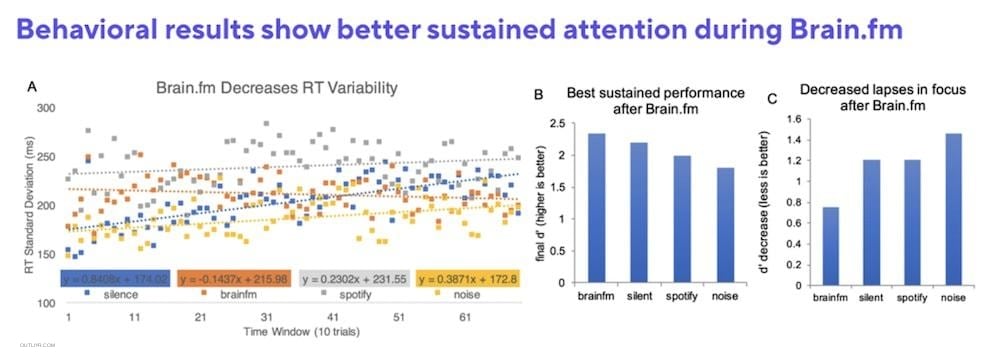
Four principles set Brain.fm apart from other functional music:
- Neural phase locking
- Dedicated composition
- Distraction reduction
- Testing in the real-world
Brain.fm’s core is their patented neural phase-locking technology. Composers design every audio track with neural phase locking in mind. This is the process of coordinating the activities of neurons to shift you into your desired state and accomplish the selected goal.
Next, unlike most AI-generated music, Brain.fm has a team built of in-house composers, patented tools, and special techniques to engineer the highest-quality music. If you’ve tried binaural beats, isochronic tones, or other consciousness-altering tunes, you likely noticed that they sound mechanical. Their unique composition process makes the tracks more effective and much more pleasurable to listen to.
There’s a little-known secret in the music industry.
Only memorable tunes ever go viral. Vast sums go into hooking listeners’ attention. Music producers pump up the vocals and other catchy parts to hook attention. This comes at a cost to you, shifting your focus to the music instead of your work. To retain listeners, they strategically place them throughout songs. As a result, traditional productivity playlists don’t do nearly as much as they could. Brain.fm specifically engineers distraction-free tracks, since they don’t need to grab attention. Minimizing distraction leads to greater effectiveness. More high-quality work completed in less time.
Where other companies create functional tunes and quickly release them to the world, these undergo rigorous evaluation. In-house scientists use brain imaging technologies like fMRI and EEG to evaluate how each track affects the brain. Then they run large-scale behavioral tests, measuring performance against a control group. This placebo group listens to the same audio but without Brain.fm technology applied. Isolating the effects of Brain.fm’s neurotech.
Brain.fm vs Binaural Beats vs Isochronic Tones vs White Noise
If you’ve used productivity music before, you’ve likely come across these other technologies.
I’ll give an brief summary of each and then compare them to Brain.fm at the end.
Binaural beats
Binaural beats play a different frequency into each ear. The brain harmonizes the different frequencies, producing neural synchrony, and is believed to entrain the brain to the average of the two frequencies. Because of this, you’ll need stereo (one channel for each frequency) headphones.
The first few times I used binaural beats, I did feel different. After a few sessions, I no longer felt any perceived effects. I also noticed self-quantification metrics (like reaction time) plateaued.
Quality binaural beats seem to work but only initially. Even Dr. Gerald Oster, the man who shed light on binaural beats, later denied their efficacy.
Isochronic tones
isochronic tones are methodical, consistent beats of a single tone, rapidly turned on and off. Despite this, they’re considered one of the more effective forms of auditory brainwave entrainment.
You’ll need to find a great source that doesn’t strip out or compress the important frequencies. Isochronic tones are composed of sharp sounds. I didn’t find listening to them pleasing.
White/pink/brown noise
Each of these types of noises results from generating random audio from across the sound spectrum. The differences between white, pink, and brown noise lie in the frequency distribution. White noise is evenly balance throughout the spectrum. Pink is softer at the high-end, and louder at the low-end of the spectrum. Brown noise lacks the high-end frequencies and is even stronger at the low-end.
White noise is the most well-known and researched. It can inspire creativity, improve mood, and promote relaxation. At the same time, it doesn’t seem as effective as some of the alternatives and may have negative side effects. Again, these color noises do not sound anything like music.
Brain.fm
Brain.fm developed their own patented technology with specially-designed sound elements. For example, they mention that their Focus mode removes the distracting high-frequencies (similar to brown noise) and muscial special effects. Their Sleep mode uses a technology called 3D spatialization which soothes the nervous system and promotes rest.
Check out their scientific research papers for diagrams of how Brain.fm affects neurobiology.
How to Use Brainfm Optimally
Between the mobile and web apps, you can use this software virtually anywhere.
Unlike drugs which build tolerance, brainwave entrainment actually benefits from regular use. You get better results from the same (or less) “dose”.
Interestingly, the effects should last for a short while even after you stop listening.
Though their team recommends against combining Brain.fm with other music, you can easily cycle it.
For example: a 60-minute session of Brain.fm, followed by an hour of Spotify, followed by another hour of the neuromusic.
Start-to-finish, this is how I use Brain.fm
Setup your gear
Headphones or earphones are not required. They do add 3D enhancements which further boost the music’s impact. The Focus mode seems the least impacted by playing through a speaker. Using headphones benefits the Sleep mode most.
If available, disable DSP or EQ settings on your device and/or earphones.
Select your mode
Right now, Brain.fm offers three separate modes.
Each mode uses different technologies and audio tracks.
Within each mode, you’ll find a list of activities.
Activities further hone the tech to accomplish specific goals and tasks.
Focus mode
The go-to mode to sustain focus, and accomplish “Deep Work”, and prevent multi-tasking.
It works primarily by entraining the brain to a beta-dominant state, but also by emitting alpha, delta, gamma, and theta wave patterns.
Focus mode is awesome for:
- Studying
- Reading
- Creative work
- Deep work
- Light work
I use Focus mode more than anything.
Sleep mode
Sleep is where learning, memory consolidation, and experiential processing take place. As well as physiological repair and growth.
This mode simulates the restorative phase of sleep known as Slow Wave Sleep and specifically Delta brainwaves. Leading to overall higher quality sleep.
I use Sleep mode for:
- Extended sleep
- Naps
- Adjusting to new timezones
- Float tanks and sensory deprivation experiences
It’s especially great to cure night where I lie awake, tossing and turning, anticipating the next day.
Relax mode
Recharging with moments of relaxation is the (often) missing part of the productivity equation. It’s the gas tank fueling your highest-leverage, most impactful work.
Brain.fm’s Relax mode induces calming alpha brainwaves. The same brain waves observed in athletes performing deep into the Flow State. Just 4-minutes of this mode outperformed the world’s most relaxing songs, decreasing tension by as much as 200 percent.
I use Relax mode for:
- Entering the peak performance zone of calm alertnesss
- Deep meditations
- Recharging between meetings
- Alcohol-free unwinding
- Relieving stress and anxiety
I didn’t expect much, so I only recently started using Relax. So far I’ve found it a nice way to close out hectic days.
Choose your activity
Once you choose your mode, you select an activity.
This fine-tunes the audio to help you excel at particular tasks. It works by boosting the effects using specific frequencies, noises, and other “events”.
Focus activities include:
- Deep work
- Learning
- Creativity
- Light work*
Relax activities include:
- Recharge
- Chill
- Unguided meditation
- De-stress*
- Unwind*
Sleep activities include:
- Deep sleep
- Power nap
- Guided sleep*
- Wind down*
Note: activities marked with an asterisk are only available on the mobile apps.
Pick your genre
Next, you choose what type of audio tracks you prefer. Music, nature, or ambient soundscapes.
Options vary based on the mode and activities you pick.
This does not affect the functionality of the music, only your enjoyment.
Pick your intensity
Brain.fm describes the audio’s brain-entraining intensity as the “neural effect”.
You have three options:
- Low
- Medium
- High
Beginners or the highly sensitive (to audio or coffee) may want to start with Low. High is their maximum effect, recommended for those that want extra stimulation or have ADHD. I started on Low and noticed a definite effect.
This setting isn’t the volume of the audio, but rather the strength of their neural phase-locking technology. You will notice that some frequencies in the track sound emphasized.
Brain FM App
Brain.fm offers four ways of accessing their audio:
- Web app
- macOS app
- iPhone app
- Android app
You can also find unofficial apps developed by third parties.
I don’t have a PC or Android, so I can only comment on the software built for Apple devices.
A current limitation of the Brain.fm macOS app is that it requires the new M1 chip. Macbook models pre-2020 don’t have this and must either use the web or mobile app instead. Their support team told me to expect a more compatible app to come out soon.
Since I downloaded the iPhone app, it has worked flawlessly for me. Other users previously reported glitches and lag, but it seems that they’ve been resolved. One thing I noticed is that the developers optimized the mobile app for activities you’d do on the go.
The mobile app also contains an additional mode called Meditate. You won’t find this in the web app. Plus, each mode contains additional activities not found in the web app.
Surprisingly, the iPhone app appears to be the most functional Brain.fm platform.
My Honest Experience
I’ve been using Brain.fm for several months now.
Before it, I had researched and tried virtually all productivity-enhancing audio on Earth.
Here are my thoughts on the platform after several months of use…
Brain.fm Pros
Effective
Fast-acting
Built-in Pomodoro timer
Offline mode (mobile & desktop apps)
Favorite and skip tracks
Cross-platform support (web, macOS, Windows, Android, iPhone)
Customizable intensity
Quiz auto-configures your ideal settings
Safe and has inverse-tolerance
Multiple genres
Brain.fm Cons
Web app has no offline mode
Short free-trial
macOS app requires newer hardware (M1 chip)
Music still doesn’t sound like Spotify
Certain settings only available on mobile
Library size is still growing
My first sessions with Brain consisted of the Focus mode, their Electronic genre, the Deep Work activity, and Low neural effect. Given my many underwhelming cognitive-enhancing audio experiences, I had low expectations.
Pros
I had no trouble navigating through the apps. Their designers did a good job making the UI intuitive and seamless.
Less than fifteen minutes later, I felt undeniably different. My phone no longer had that same allure. I banged out a few thousand words without distraction. Most prominently, I easily locked my attention on my computer. The effects continued to build over the next 20 minutes.
I felt as much “in the zone” as I do when I’m deeply immersed in competing in American Football or Rugby.
Then I discovered the neural effect filter, and decided to give High a shot. I normally feel a need to get up and move around every hour or so while working. Using this mode and intensity, I can easily work for 3-hours without break. Not only that, but I generally track my writing process and drafts. Compared to my usual average, my initial session powered by Brain.fm resulted in 23 percent fewer errors.
I sometimes find the High intensity level overwhelming. It certainly feels stimulating. My wearables show about a 15 beat per minute increase in my resting heart rate while using it.
Unlike a cup of coffee, however, I return to baseline about 20-minutes after stopping the audio.
85 percent of my Brain.fm use is the Focus mode. But I’ve recently started dabbling with Sleep and Relax to some success.
I usually sleep with earplugs, and had a hard time finding a comfortable pair of sleeping headphones. No fault of the app, but often I’ll roll over and yank the headphones out.
My Oura Ring shows that I fall asleep and drop into deep sleep faster. I’d love to see how my biomarkers from an entire night with Brain.fm would look, if only my headphones would stay in.
Cons
The first pitfall I came across with this service is that the free trial is super short.
I believe mine was just three days! Since effects build with repeated use, two-weeks or even a one-month trial seems reasonable.
I own a MacBook Pro, and I’ve held off upgrading since many apps still lack compatibility with the new M1 chips. I was shocked to find that they indeed have an app for macOS, but it requires the new chip. So for now, that’s not an option for me. Therefore, I cannot listen to tracks offline on my computer.
In previous years, users complained about the minuscule size of their music library. However, the increased subscription free has funded composition of new tracks. I actually haven’t noticed repeats. Compared to something like YouTube or Spotify, however, users have far fewer genre and song options.
Cost. Last and most obvious, is the price tag of Brain.fm. The lifetime deal disappeared for good, and it now costs the monthly equivalent of between $3.33 (annual plan using code URBAN) up to $6.99 when paying month to month. Sure, that’s cheaper than one large Starbucks deluxe per month, but it still adds up.
Brain.fm Pricing
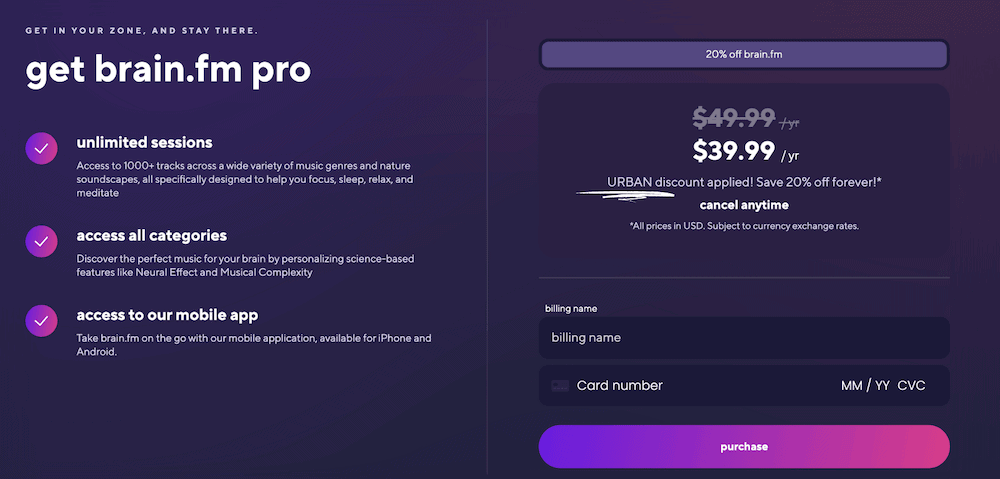
Unfortunately, Brain.fm is not free nor open source.
When I scoured the web for the best prices, I came across an old 2016 Brain.fm lifetime subscription. Those were the pre-beta days when this platform was still experimental. The lifetime deal likely won’t return.
Right now, Brain.fm offers two subscription tiers:
- $6.99 per month
- $49.99 per year ($39.99 with code URBAN)
Both give you access to unlimited sessions, offline access, and access to all their categories. Only the annual subscriptions is backed by their 60-day money-back guarantee.
If this seems interesting, I suggest signing up for a free trial.
Use the Brain.fm discount code URBAN to save 20%
Stacking Brain.fm with Other Neurohacks

This functional music works great on its own.
You can also add other things for even better effects.
Nootropics
Special brain-boosting supplements make Brain.fm feel like rocket fuel. Click here to learn more about this class of supplements called nootropics. My top picks are:
should you choose to stack nootropics and this software, definitely start on the low neural effect level.
Neurofeedback
This functional music puts your brain into a hyper-suggestible state.
Neurofeedback is a form of brain training that helps condition the brain to operate in optimal states. These top neurofeedback devices measure your real-time brainwaves and then use special sounds or visuals to reorganize or retrain your brain signals.
Helping you naturally lock in your ideal brain state at will. Any time, any place.
Combining the two may lead to longer-lasting effects, in fewer sessions.
N-Back memory training
Few activities can meaningfully increase both IQ and working memory.
N-Back training is a game designed to test and improve your mental RAM. Like with neurofeedback combining this form of training with Brain.fm’s functional music should help you progress further and faster.
Other & Free BrainFM Alternatives
Other functional, productivity-boosting audio exists.
This most popular alternative is a service called Focus@will. I’m not a fan. It’s considerably more expensive, has less scientific backing, and has a tiny music library. Plus, it only has the Focus mode (which isn’t as effective).
Endel is another interesting alternative backed by a whitepaper. It contains multiple modes and seems like a good contender against Brain.fm. I don’t like their lack of transparency. I had to dig to find their pricing ($6/month, $50/year, or $90 for a lifetime). I’d only choose Endel if you get a great deal on the lifetime license.
Evoked Response is a brand-new, limited-release, music technology company that also claims to neuroscientifically create tracks. The limited science I saw backing their software so far looked impressive, but currently, they only offer a few tracks.
Finally, there are all kinds of free focus-inducing soundtracks and music available around the internet. I haven’t found anything free that’s research-backed or feels as strong as Brain.fm. Nonetheless, for those on a budget, you can check out:
Brain.fm Review Verdict: Shift Your Mental State on Demand
Neuroaccoustic software is the frontier of safe and effective performance-enhancing.
I call it…
Digital doping without the downsides.
State-of-the-art workplaces, professional sports teams, and high-performers have been increasingly adopting the technology.
To facilitate tasks like:
- Focusing
- Deep work
- Trivial tasks
- Creativity
- Reading
- Learning
- Studying
- Napping
- Sleeping
- Meditation
- Athletics
And much more.
All without drugs, medications, or exogenous substances that dysregulate the body.
Movement, rest, and nutrition still reign king. Once you’ve worked on these, neuroscientific audio can elevate you to a new level.
Other Brain.fm reviews I saw online are outdated. The software has come a long way in recent years, with plenty of new features, a bigger library, more polished user interface, new modes and activities, and a different business model.
While it’s not perfect, I pay the equivalent price of one large piping hot Starbucks special. $3.33 per month, for unlimited access to heightened states. I notice the effects within a few minutes, and I quickly drop into The Zone. I get more, higher-quality work done, faster, and leave my computer feeling less drained.
Plus, it stacks with many of the other favorite neurohacks to get me even better results.
Saving hours of time, making fewer mistakes, and improving my rest and recovery certainly is worth the monthly equivalent of one cup of coffee.
Try Brain.fm’s risk-free trial today. If you like it, use the code URBAN when you upgrade to save 20 percent.
Have you tried functional neuroscience-backed music like Brain.fm? Let me know your experience in the comments below!

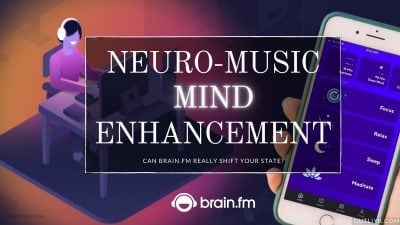
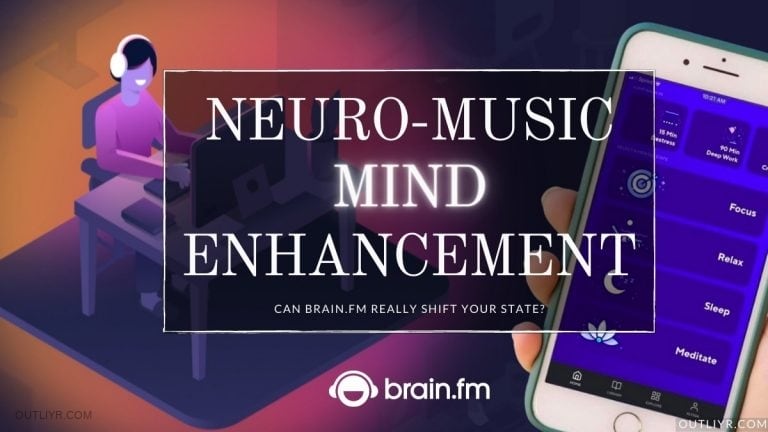
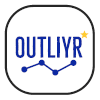
love love love your deep thinking and research-informed comments about the newest neurotechnology on the market—–especially the (implicit) insights you are making to discern pseudoneuroscience from the “real stuff”(ie, check out my colleague’s brilliant work, Brainwashed, by Sally Satel). In this light, I am curious to learn more about best home systems for not just flow/focus, but deeper emotional regulation/mid brain benefits for mood disorders, addiction, trauma/PTSD. Curious on your thoughts there?
Hi Dr. Fleming!
Thanks for that. I’ll check out the book.
Personally, I am a huge fan of neurofeedback and heart coherence (HRV) training. The device I’ve been using daily and loving for this is called Sens.ai (check out my review of the system). What do you do for regulation and to help with those?